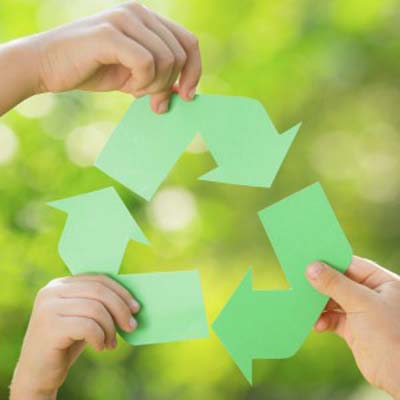
THE QUICK GUIDE TO AN ECO FRIENDLY CLASSROOM
It is important to teach children to be environmentally conscious from an early age, so what better place to start than the classroom? Sure, trying to keep dozens of kids under control may be a difficult task to start with, never mind trying to monitor they are being eco-friendly throughout the day, but with just a few simple changes you can start to make a big difference.
Following on from our hints and tips on how to create an eco-friendly office, we bring you are Quick Guide to an Eco-Friendly Classroom!

Recycling
Recycling is vital for anyone or any organisation looking to be more environmentally friendly, so get them started while they’re young! There are plenty of materials than can be recycled in a classroom, so why not set up a dedicated recycling area to ensure it’s getting done correctly. Have separate bins or boxes for each recyclable material – you can even have a student as recycling monitor each week with the responsibility of making sure everything is done right. Once you are recycling, set up a recycling data wall to track just how much you have recycled or how many trees you’ve saved as this helps to show the children just how much good they have done.
You can also recycle various household items in artwork and classroom displays. One house’s trash could be a creative child’s treasure – all it takes is imagination! Have children bring one item in a week (toilet roll tubes, newspapers, cardboard boxes… it can all be used) or just before a big art project.
On average in the UK each person gets through 200kg of paper per year. You can do your bit to bring this number down by having single-use paper trays where kids can put sheets which still have one side blank. These can be reused for things like drawing, notes and art and can massively help to reduce the classroom’s paper consumption.
Plants
Keeping plants in the classroom has two great benefits: firstly, they help to teach children about nature and biology, and secondly it helps to keep the air clean! Teach them the importance of looking after living things by assigning one pupil each week to make sure the plants are watered. Healthy plants can also help to make the classroom look a bit nicer, so everyone’s a winner.
Energy
This one goes without saying really, but always be sure that electrical appliances are powered down at the end of each day. Computers, printers, projectors, interactive whiteboards… Nobody will be using them overnight so turn them off and save some energy. Same goes with the lights, if nobody is in the room then switch them off. It’s the simple little things that make a big difference.
Don’t be afraid to let some fresh air into the room either, always open windows when possible rather than turning on air conditioning systems in a bid to save some energy.
Lunch
Now this one may not be something you have that much control over, unless you’re a dinner lady, but there’s no harm in trying! Why not suggest having a no meat day in the cafeteria, which will be good for the environment and good for the children’s health… Meat-free Mondays has a bit of a ring to it, doesn’t it?
New Blog
Tags
Scan to wechat :
